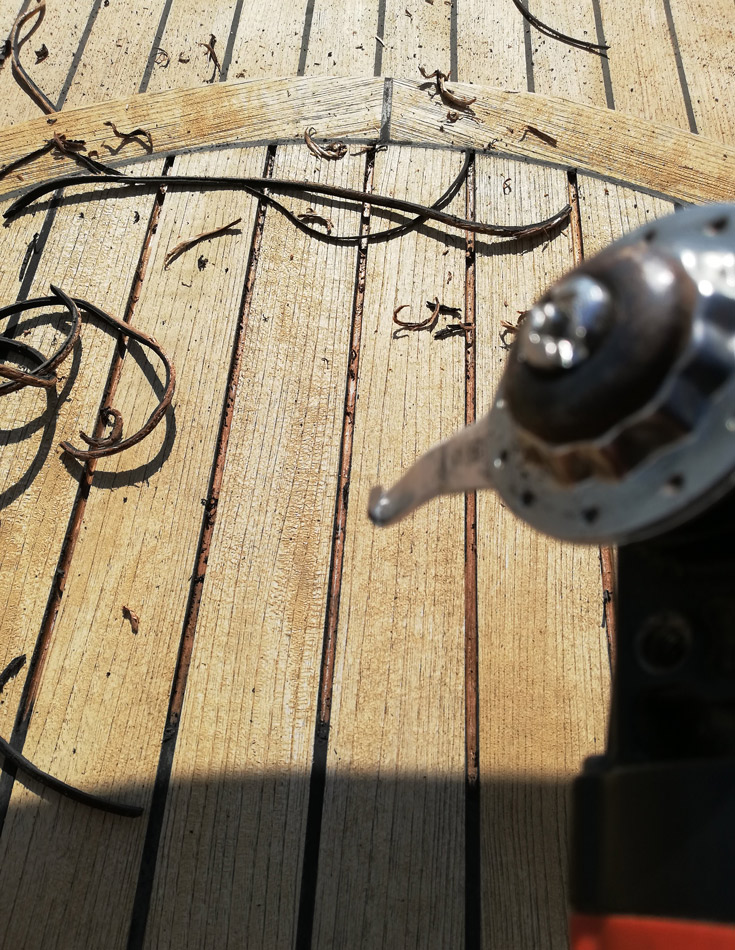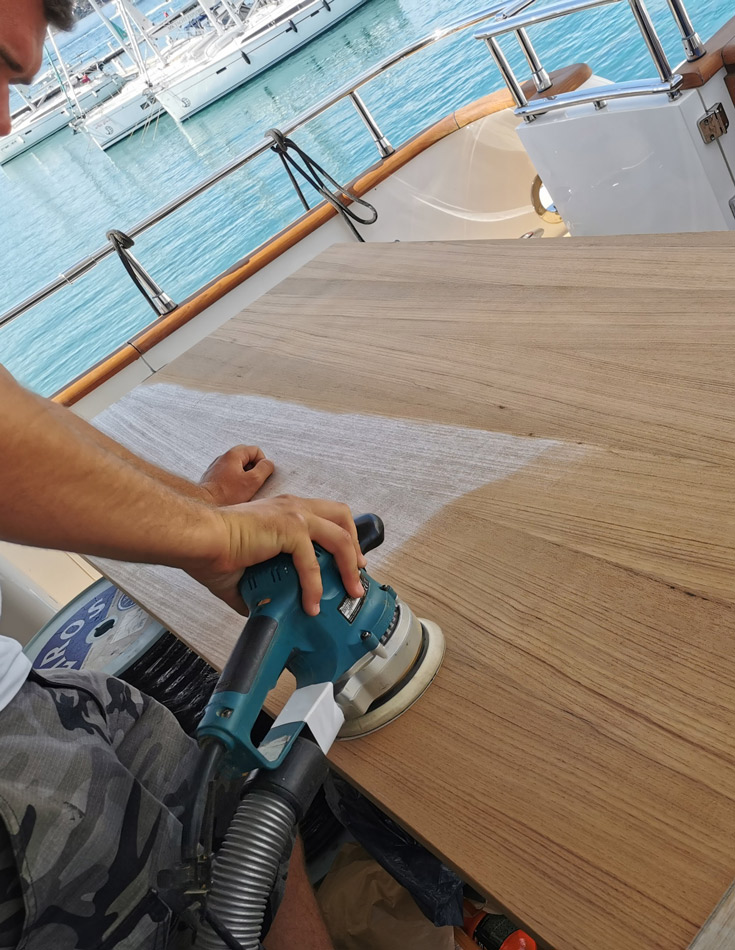Deck repair,re-caulking and sanding
is needed when you start to notice moisture in the sealant.
Or when the sealant starts to melt and when it loses its properties or simply disappears due to lack of teak.


Or when the sealant starts to melt and when it loses its properties or simply disappears due to lack of teak.
As a teak deck ages, one of the first things to go are the plugs in the screw holes. Over time the deck gets thinner and eventually the plugs will loosen and fall out. A telltale sign of the plugs starting to loosen is a black ring around the plug caused by mildew as water flows around the plug.
The primary reason for sanding a teak deck relatively smooth is to allow moisture and contaminants to run off the decks rather than become entrapped on the deck surface. Teak, like all woods, can decay. The softwood between the grain lines wears and deteriorates faster than the hardwood of the grain lines. As a result, the wood develops a raised grain or rough surface.


As a teak deck ages, one of the first things to go are the plugs in the screw holes. Over time the deck gets thinner and eventually the plugs will loosen and fall out. A telltale sign of the plugs starting to loosen is a black ring around the plug caused by mildew as water flows around the plug.


The primary reason for sanding a teak deck relatively smooth is to allow moisture and contaminants to run off the decks rather than become entrapped on the deck surface. Teak, like all woods, can decay. The softwood between the grain lines wears and deteriorates faster than the hardwood of the grain lines. As a result, the wood develops a raised grain or rough surface.